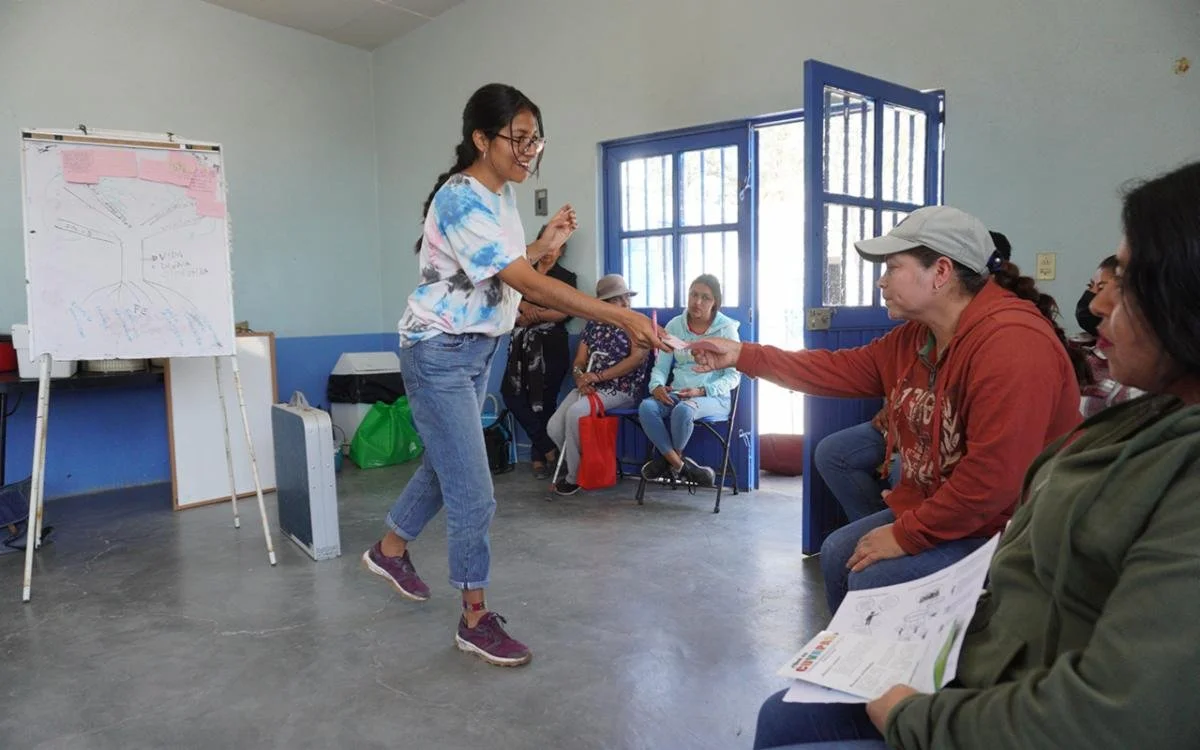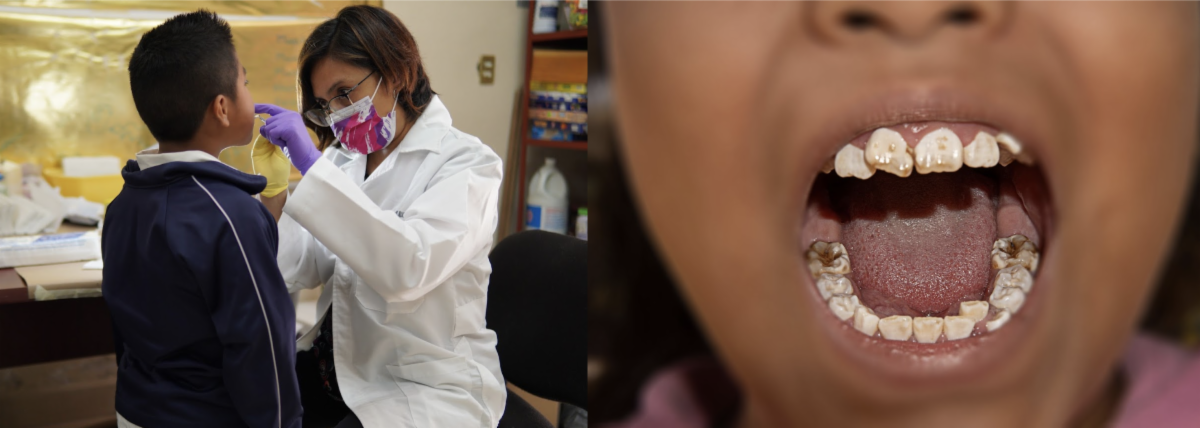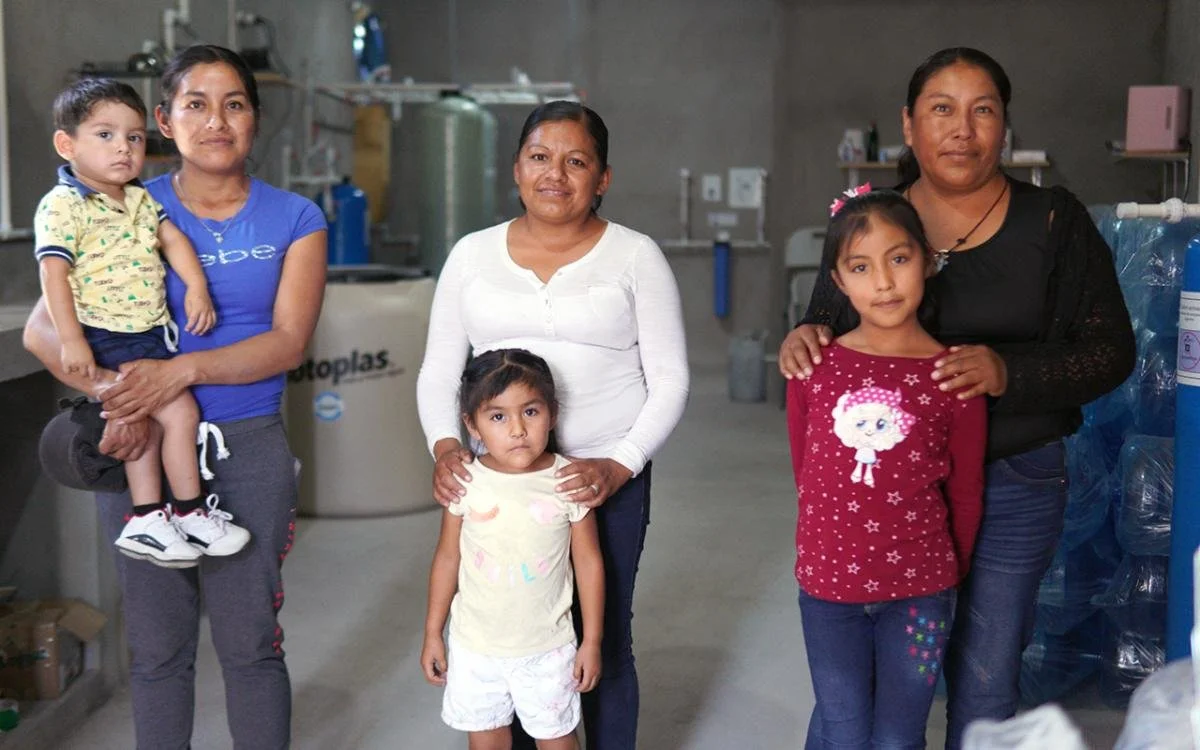Beyond Technology: What it Takes to Build a Solution
Photo: Ana, Community Organizer at Caminos, leading an educational session to raise awareness about regional water issues.
In our region, the Upper Río Laja Watershed, over half the population is exposed to dangerously high levels of arsenic and fluoride in their drinking water. With no appropriate commercial options available, and bottled water being prohibitively expensive, thousands of families are left to rely on water that, though seemingly clean and odorless, is tainted with these harmful contaminants. This water, often mistakenly deemed safe, poses severe long-term health risks, particularly to children, who suffer disproportionately as their developing bodies absorb these contaminants at a much higher rate.
“Our water is no longer suitable for drinking. It is damaging our health, our teeth, our bones, and our kidneys.”
– Marina Baltazar, a mother of two young children from the community of Los Ricos
A striking example is the rural community of Alonso Yáñez, which is home to nearly 1,500 residents and lies within the municipality of San Miguel de Allende. Their community well has both excessive arsenic and fluoride. In fact, their fluoride levels are dangerously more than 5 times above the allowable limit. Preliminary results from a health study conducted in collaboration with the National Institute of Public Health of Mexico, Columbia University, and the University of Colorado, revealed that almost 80% of children, aged 7-11, are afflicted with dental fluorosis in the community.
Photos: The effects of excessive fluoride in drinking water in the community of Alonso Yáñez.
At Caminos, we’ve dedicated years to researching and developing a groundbreaking community-wide water treatment plant, which directly targets difficult-to-remove arsenic and fluoride, called the Groundwater Treatment System, or simply “GTS.” This pioneering technology is poised to dramatically improve the lives of thousands affected by arsenic and fluoride contamination in our watershed. Developed entirely in-house, part of the beauty of GTS is that it's designed to be owned and operated by the very communities it serves.
And thanks to donors like you, we are thrilled to announce that after months of hard work, the GTS in Alonso Yáñez was fully installed just a couple of months ago and is now providing clean drinking water to families throughout the community. However, despite this significant milestone, the deployment of the GTS in a community like Alonso Yáñez is only the beginning.
Photo: Matías showing how the GTS in Alonso Yáñez works to a visiting group.
Moving from Installation to Integration
“The system belongs to us, to the community. We don’t need to depend on another organization. We have the ability to be self-sufficient.”
– Matías Ramírez, GTS Committee Alonso Yáñéz
The recently inaugurated GTS in Alonso Yáñez was much more effort than just installing a treatment plant, although that was quite an achievement. To get to this point took dozens of community meetings, and a broad range of other activities including educational programs, capacity building, the development of a “GTS committee,” onboarding dozens of new families, and extensive technical training for system operators and the GTS Committee members overseeing the system’s day-to-day use.
With the GTS now up and running, and early adopters – nearly 1/3rd of the community (~500 people) – already signed up and using the system, our team’s focus has shifted to bringing on new users to expand the public health impact to the broader community, reinforce the system’s use through education, and build the community's capacity for independent operation moving forward. Some of the key challenges we face include a general mistrust of new technologies, misconceptions about existing groundwater quality, distribution challenges in moving heavy water to all areas of the community (often across rugged terrain), and false claims or myths, often from outside actors, regarding what actually can, and cannot, remove arsenic and fluoride from the water.
To address these issues, we in Caminos are mounting comprehensive communication and education campaigns and developing accompanying supporting materials. We are collaborating directly with the local schools, governing bodies, community leaders, various committees (parents councils, water committee, etc), and other organizations with a presence in the community. A central component of this strategy is the gradual transfer of responsibilities to the designated GTS committee, and systematically reducing Caminos' direct involvement over time. By building trust in the system and increasing usage, we can ensure it becomes financially self-sustaining, ultimately allowing the community to completely manage the GTS independently.
The importance of the accompaniment phase to increase adoption of a brand new technology like GTS cannot be understated; it is paramount to ensure long-term success in Alonso Yáñez as well as creating the blueprint for sustainable GTS expansion to the nine new communities we plan to install GTS in during the next stage of our rollout.
Photo: Managers of the first GTS in Los Ricos gather for a photo next to the newly installed system at Alonso Yáñez.





